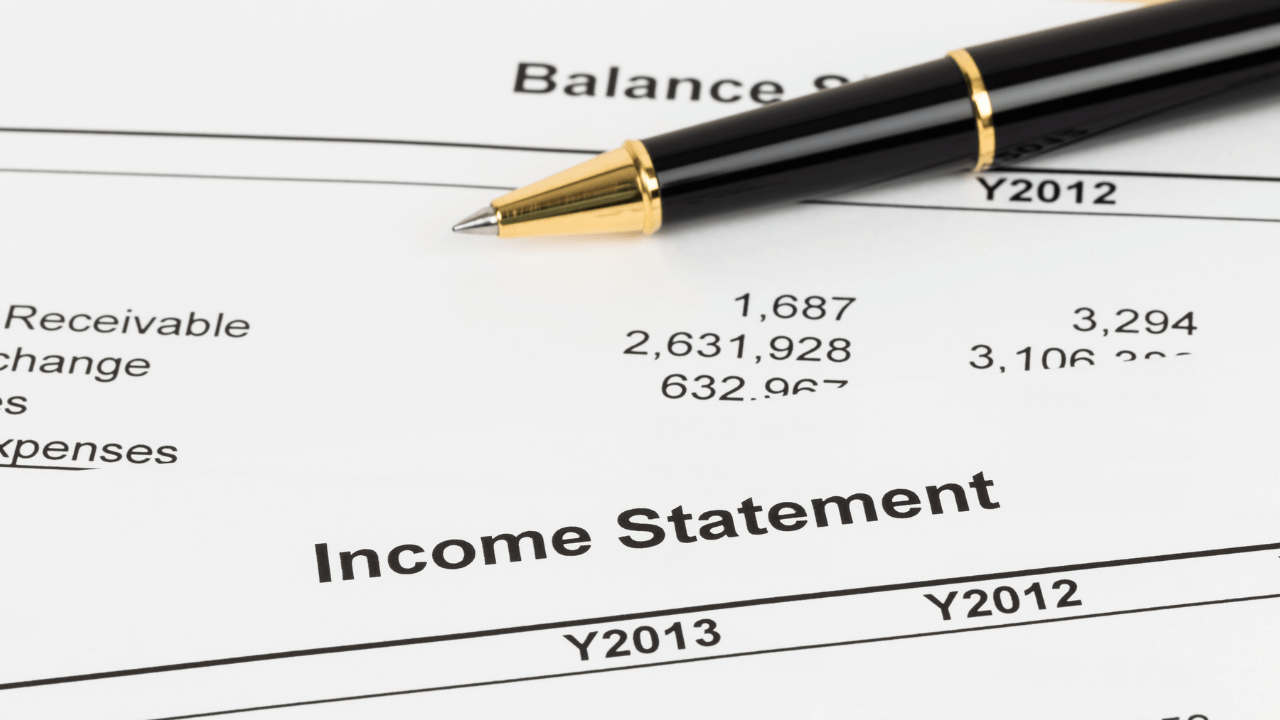Have you ever stared at a financial statement and felt puzzled? You’re not alone!
For many, these documents can seem like a daunting puzzle filled with numbers, jargon, and cryptic abbreviations.
But what if we told you that mastering financial statements could be your ticket to making informed decisions, whether you’re managing your finances, evaluating investments, or navigating business strategies?
In this blog, we’ll demystify the world of balance sheets, income statements, and cash flow reports.
We’ll equip you with the essential skills needed to read between the lines of these crucial documents and uncover insights that can shape your financial future.
Get ready to transform confusion into confidence with doola, as we provide you with practical tips and financial tools that will have you analyzing financial statements like a pro in no time!
What Are Financial Statements?

Financial statements are essential documents that provide a snapshot of a company’s financial performance and position.
There are three main types of financial statements: the balance sheet, income statement, and cash flow statement.
These three financial statements are interconnected and provide a complete picture of a company’s financial performance and position.
1. Balance Sheet
The balance sheet, or the statement of financial position, summarises a company’s assets, liabilities, and equity at a specific time. Assets include cash, inventory, equipment, etc.
Liabilities represent debts or obligations to be paid off, and equity represents the value left by shareholders after deducting liabilities from assets.
The balance sheet follows the basic accounting equation: Assets = Liabilities + Shareholders’ Equity. This means all assets must equal the liabilities and equity on the balance sheet.
2. Income Statement
The income statement shows a company’s revenue and expenses for generating that revenue during a specific period.
It starts with sales or revenue at the top and then subtracts various expenses, such as cost of goods sold (COGS), operating expenses, taxes, interest expense, etc., to arrive at net income or profit.
Net income is an essential number on the income statement, indicating whether a company made a profit or incurred losses during a period.
3. Cash Flow Statement
The cash flow statement tracks all cash inflows and outflows within an organization during a particular period.
It can be divided into three sections: operating activities (cash flows from day-to-day operations), investing activities (cash flows related to buying or selling long-term assets), and financing activities (cash flows associated with raising capital).
The cash flow statement helps investors understand how effectively a company manages its cash resources by showing where it gets and how it uses it.
What Are Financial Ratios?
Financial ratios are essential for understanding and analyzing a company’s financial statements. They provide valuable insights into how well it can cover its debts, or how much profit it’s earning.
In simple terms, financial ratios are mathematical calculations that compare different figures from a company’s financial statements to assess its performance. These figures include revenues, expenses, assets, liabilities, and equity.
By examining the relationships between these numbers, we can better understand how well the company manages its resources and generates profits.
Various financial ratios can be used to evaluate different aspects of a company’s operations and, when combined, paint a more comprehensive picture.
Balance Sheet
The balance sheet is a key financial statement that every business owner and investor should be familiar with. It tells you how much business assets you have and how much money you owe in liabilities.
Assets can include cash, accounts receivable, equipment, inventory, or investments. Liabilities include accounts payable, accrued expenses, and long-term debt such as mortgages and other loans.
Let’s look at each balance sheet’s components, starting with assets. It includes all the value you have on hand, such as cash and the amount in the business bank account.
Some of it is less liquid, like equipment or inventory, and accounts receivable or payments you’re due to receive.
Assets are usually listed in order of liquidity – meaning how quickly they can be converted into cash. Cash is typically listed first, followed by short-term and long-term investments such as property or equipment.
Liabilities are the money you have to subtract from your assets. It gives you a rough idea of how much value your business has to work with.
It typically involves monthly payments to vendors or contractors, which could be considered a short-term liability.
Liabilities are also listed in order of due date: current liabilities (due within one year) are followed by long-term liabilities (due after one year). Long-term liabilities, like business loan debt, last longer.
Lastly, equity is the money you have put into the business.
It includes retained earnings (profits reinvested back into the company), drawing (the money you pay yourself), common stock (the value of shares issued to shareholders), and any other capital contributions made by owners.
Now that we understand how a balance sheet is structured, let’s discuss how to analyze it effectively.
One way to do this is by calculating financial ratios using numbers from both sides of the balance sheet.
How to Analyze a Balance Sheet with Financial Ratios
To gain deeper insights into a company’s financial position, it is crucial to analyze the balance sheet using various financial ratios, such as the current, quick, and debt-to-equity ratios.
Current Ratio
The current ratio measures a company’s ability to meet its short-term obligations with its current assets. A high current ratio indicates the company has enough liquid assets to cover its short-term debts.
It measures your liquidity to determine how easily your current assets can be converted to cash to cover your short-term liabilities.
To calculate the current ratio, divide the total current assets by the total current liabilities.
Here is the current ratio of Barney’s Barn:
Current Ratio = Current Assets / Current Liabilities
Current Ratio = 33,000 / 11,000 = 3
Ratio = 3:1
Ideally, a current ratio of 2:1 or higher is healthy, showing that the company can quickly pay off its short-term debts.
Quick Ratio
The quick ratio, also known as the acid-test ratio, measures a company’s ability to meet its debt obligations with its most liquid assets (cash and cash equivalents).
Unlike the current ratio, which includes all current assets in its calculation, this ratio only considers highly liquid assets that can be converted into cash quickly.
To calculate the quick ratio, divide total liquid assets (current assets – inventory) by total current liabilities.
For example, the current asset value of Barney’s Barn is $24,000 (excluding equipment value)
So, the Quick Ratio = 24,000 / 11,000 = 2.18
Ratio = 2.18:1
A quick ratio of 1:1 or higher indicates that the company has enough liquid resources to cover its immediate debts without relying on inventory sales.
Debt-to-Equity Ratio
The debt-to-equity (D/E) ratio compares a company’s long-term debt with its shareholders’ equity. It shows how much of a company’s financing comes from borrowing money versus equity.
To calculate the D/E ratio, divide total liabilities or debt by shareholders’ equity. It only includes long-term debt, such as bank loans, not short-term liabilities, like accounts payable.
So, the debt-to-equity ratio of Barney’s Barn = 10,000 / 25,000 = 0.4
Ratio = 0.4:1
A high D/E ratio indicates that most of the company’s financing comes from debt, making it riskier for investors.
A lower D/E ratio is generally considered favourable, meaning the company has more funding through capital investment rather than borrowing.
Income Statement
The income statement, also known as the profit and loss statement, reflects a company’s revenues, expenses, and profits for a financial reporting period. It shows how much revenue a company generated and how much it has spent on expenses during that period.
It is crucial to know the different components of an income statement to better understand how to read and analyze it. The first is the revenue or sales section, which shows the total money generated from selling goods or services.
After revenue comes the cost of goods sold (COGS) section. This section includes all direct costs associated with purchasing goods the company sells.
The difference between revenue and COGS gives the gross profit margin.
General expenses include recurring costs to keep the business running. It may include rent, which will be the same month to month, while others, like utilities and office supplies, may fluctuate.
The next is operating earnings or EBITDA (Expenses Before Interest, Taxes, Depreciation, and Amortization).
It equals the total amount you can take home after subtracting expenses from revenue, excluding taxes.
Income tax expense is the estimated income tax paid or owed during the reporting period, which is part of the IT in EBITDA.
The last part of an income statement is net income or net profit, which is calculated by subtracting all expenses from gross profit margin.
Net Income represents the bottom line for a business’ operations after all other sources of revenue have been accounted for.
How to Analyze an Income Statement with Financial Ratios

The income statement is divided into three main sections: gross profit, operating profit, and net profit.
Each component can be further analyzed using various financial ratios to gain valuable insights into a company’s profitability.
Gross Profit Margin
The gross profit margin is calculated by dividing the gross profit (revenue minus cost of goods sold) by total revenue. This ratio indicates how much profit a company generates from its sales after deducting the COGS.
It will tell you how much money your business makes per dollar earned. You can improve this ratio by lowering your COGS (reducing the wholesale cost of goods and services) or raising prices.
Here is the calculation of Barney’s Barn’s gross profit margin:
Gross Profit Margin = (Sales Revenue – COGS) / Sales Revenue
Gross Profit Margin = (9,000 – 4,000) / 9,000 = 0.55, or 55%
So, Barney’s gross profit margin is 55%, meaning he keeps $0.55 of every dollar he earns as gross profit.
Operating Profit Margin
The operating profit margin measures how much operating earnings (revenue minus all expenses except interest and taxes) are generated for every dollar of sales.
While it is similar to gross profit margin, it also takes general expenses into account.
For Barney’s Barn, the calculation will be:
Operating Profit Margin = Operating Earnings (EBITDA) / Sales Revenue
Operating Profit Margin = 2,750 / 9,000 = 0.31, or 31%
A higher operating margin implies the company has better control over its costs and can generate more profits. Since COGS and general expenses are something you can control, you should focus on the operating profit margin to earn more profit.
Net Profit Margin
The net profit margin reflects the net income (operating income minus taxes) earned for every dollar of revenue generated. This ratio considers all expenses incurred by the business, including taxes.
Here is the calculation of Barney’s Barn’s net profit margin:
Net Profit Margin = Net Income / Sales Revenue
Net Profit Margin = 1,850 / 9,000 = 0.21, or 21%
So, for every dollar Barney earns, he keeps $0.21. A higher net profit margin indicates strong profitability, but a lower net profit margin could mean the company is not generating enough profits to cover its expenses and taxes.
Cash Flow Statement
The cash flow statement is an indispensable tool for companies following the accrual method of accounting. It provides a clearer picture of a company’s financial health by adjusting for non-cash items and tracking actual cash inflows and outflows.
In the accrual method, you may raise an invoice of $1,000 and record that as accounts receivable under asset. However, you don’t have the money on hand yet.
So, a cash flow statement reverses those transactions where you don’t have cash on hand.
Below are the key components of cash flow statements:
- Cash, Beginning of Period is the cash on hand at the beginning of the month.
- Net income is the total income for the month.
- Additions to cash reverse expenses that are listed on the books but haven’t been paid out yet.
- Subtractions from cash reverse any transactions recorded as revenue for the month but not actually received.
- Net cash from operating activities is the cash that came into business during the month.
How to Analyze a Cash Flow Statement with Financial Ratios
Analyzing a cash flow statement with financial ratios tells you how much cash you have on hand to cover liabilities. It also tells you how much cash you earned during the month. Here are three formulas to help you do that.
Current Liability Coverage Ratio
The current liability coverage ratio measures a company’s ability to meet its short-term financial obligations using its current assets. It compares the current cash flow against the debt you need to pay in the near future.
First, you must calculate your current average liability. You can do that by adding all your current liabilities at the beginning and end of an accounting period and dividing by 2. For example, Barney’s total current liabilities are $1,000 at the beginning of March and $900 at the end.
So, his current average liability is = (1,000 + 900) / 2 = $950.
Now, we can calculate his current average liability ratio using the formula below:
Current Average Liability Ratio = Net Cash from Operating Activities / Average Current Liabilities
Current Average Liability Ratio = 200 / 950 = 0.21, or 21%
A ratio lower than 1:1 indicates that the company will not have enough liquid assets to cover its debts in the near future.
Cash Flow Coverage Ratio
The cash flow coverage ratio measures a company’s ability to generate enough operating cash flow to cover its interest expenses and long-term debt payments. It is calculated by dividing the net cash flow by total debt (interest + principal).
This ratio takes into account all debt, both long-term and short-term.
Therefore, the ratio is calculated for the year rather than a month. So, you can add up the monthly operating cash flow for the year to get her annual cash flow.
Since we only have a statement of one month in which the cash flow from operations was exactly $700, we can assume the total cash flow for the year is $8,400 ($700*12).
So, the calculation for Barney’s Barn will look like this:
Cash Flow Coverage Ratio = Net Cash Flow from Operations / Total Debt
8,400 / 6,200 = 1.35
A cash flow coverage ratio above 1.0 indicates that a company generates ample operating cash flows to cover its debt obligations.
Cash Flow Margin Ratio
The cash flow margin ratio is a critical metric for understanding a company’s financial strength and stability. It tells you how much cash you earned for every dollar in sales for a reporting period.
So, if Barney made $1,200 in net sales for March, his cash flow margin ratio would look like this:
Cash Flow Margin = Net Cash from Operating Activities / Net Sales
700 / 1,200 = 0.58, or 58%.
By following these tips, you will be on your way to mastering financial statements and gaining valuable insights into a company’s financial health. If you are unsure, consult an expert in financial statements to guide you through the process.
Tap into the Power of Financial Statements with doola

Mastering financial statements may seem like a daunting task at first, but with the right tools and support from doola, it becomes much more manageable.
Get started with doola Bookkeeping, a comprehensive software that automates your financial record-keeping and simplifies reporting.
Our team of Certified Public Accountants are well-versed in all aspects of financial reporting and analysis, allowing us to provide valuable insights and guidance.
Book a consultation to find out how we can help you harness the power of understanding financial statements for your business.




